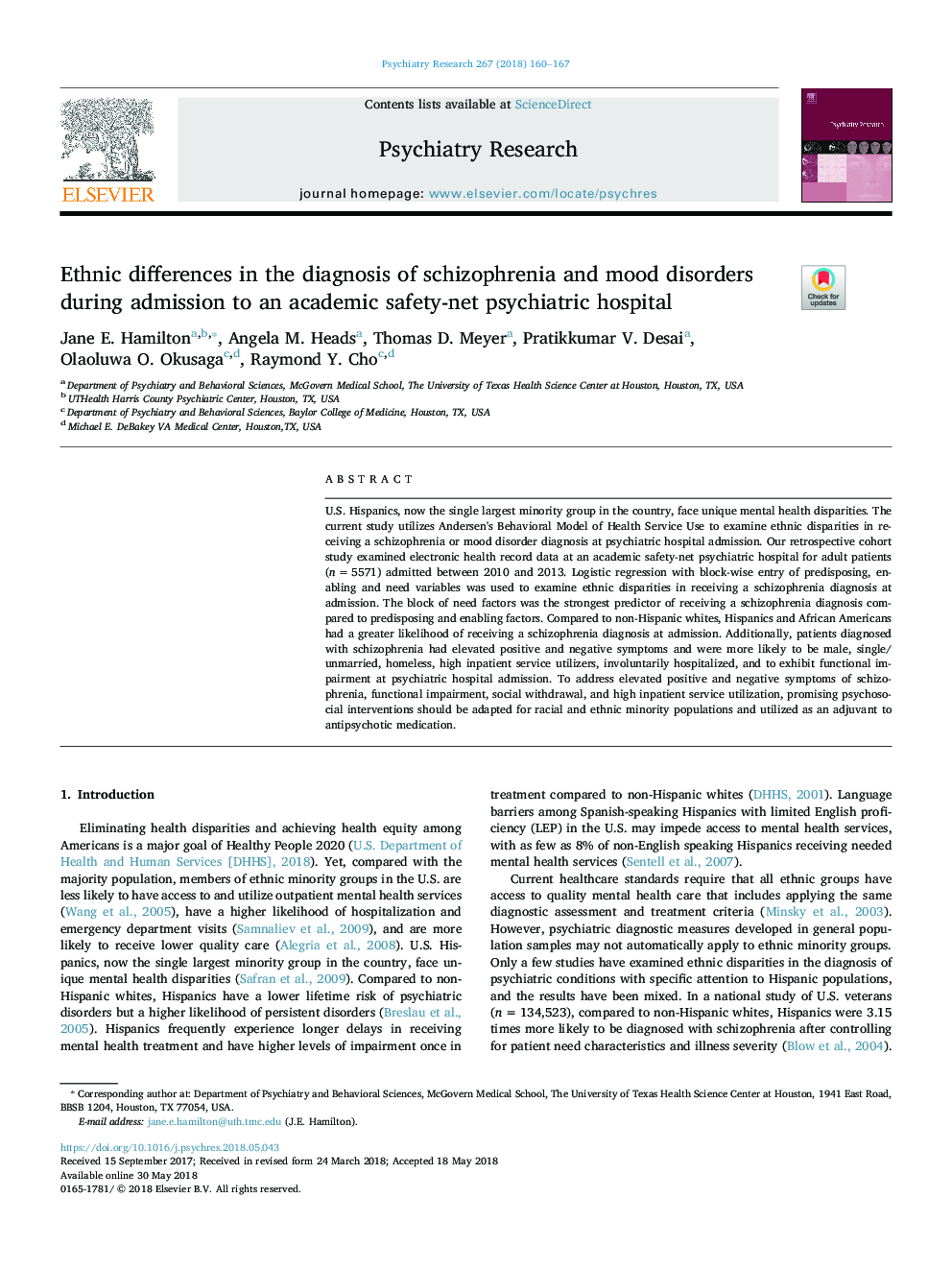| Article ID | Journal | Published Year | Pages | File Type |
|---|---|---|---|---|
| 6811209 | Psychiatry Research | 2018 | 8 Pages |
Abstract
U.S. Hispanics, now the single largest minority group in the country, face unique mental health disparities. The current study utilizes Andersen's Behavioral Model of Health Service Use to examine ethnic disparities in receiving a schizophrenia or mood disorder diagnosis at psychiatric hospital admission. Our retrospective cohort study examined electronic health record data at an academic safety-net psychiatric hospital for adult patients (nâ¯=â¯5571) admitted between 2010 and 2013. Logistic regression with block-wise entry of predisposing, enabling and need variables was used to examine ethnic disparities in receiving a schizophrenia diagnosis at admission. The block of need factors was the strongest predictor of receiving a schizophrenia diagnosis compared to predisposing and enabling factors. Compared to non-Hispanic whites, Hispanics and African Americans had a greater likelihood of receiving a schizophrenia diagnosis at admission. Additionally, patients diagnosed with schizophrenia had elevated positive and negative symptoms and were more likely to be male, single/unmarried, homeless, high inpatient service utilizers, involuntarily hospitalized, and to exhibit functional impairment at psychiatric hospital admission. To address elevated positive and negative symptoms of schizophrenia, functional impairment, social withdrawal, and high inpatient service utilization, promising psychosocial interventions should be adapted for racial and ethnic minority populations and utilized as an adjuvant to antipsychotic medication.
Related Topics
Life Sciences
Neuroscience
Biological Psychiatry
Authors
Jane E. Hamilton, Angela M. Heads, Thomas D. Meyer, Pratikkumar V. Desai, Olaoluwa O. Okusaga, Raymond Y. Cho,
